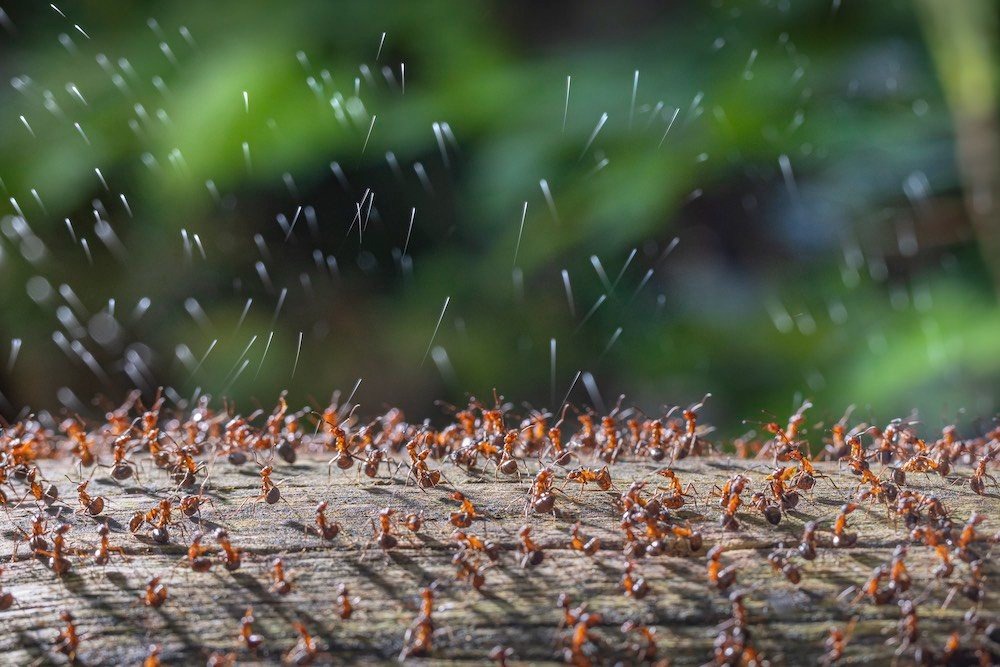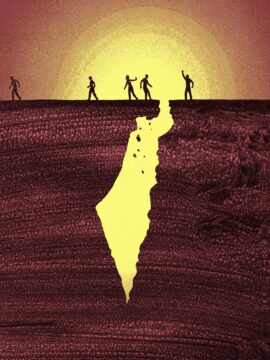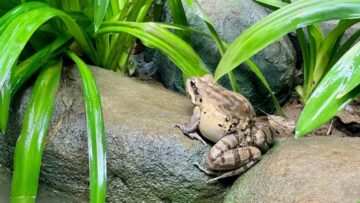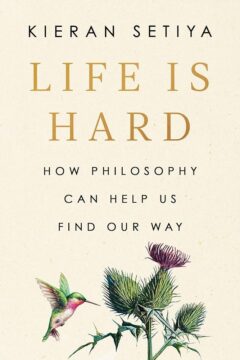Houman Barekat in The Guardian:
 Lauren Oyler, an American literary critic who writes for Harper’s Magazine and the New Yorker, believes her metier is under threat. “I am a professional, and I am in danger,” she declares in My Perfect Opinions, one of eight previously unpublished essays gathered in her first nonfiction book. She wonders if popular digital platforms such as Goodreads, where users can upload book reviews with minimal editorial filtering, will have long-term ramifications for the more considered, rigorous literary criticism that she gets paid to write. What these online communities lack in intellectual acumen, they make up for in sheer weight of numbers. Are they reshaping literary culture in their own image?
Lauren Oyler, an American literary critic who writes for Harper’s Magazine and the New Yorker, believes her metier is under threat. “I am a professional, and I am in danger,” she declares in My Perfect Opinions, one of eight previously unpublished essays gathered in her first nonfiction book. She wonders if popular digital platforms such as Goodreads, where users can upload book reviews with minimal editorial filtering, will have long-term ramifications for the more considered, rigorous literary criticism that she gets paid to write. What these online communities lack in intellectual acumen, they make up for in sheer weight of numbers. Are they reshaping literary culture in their own image?
The answer seems to be yes. Oyler believes a facile populism has crept into arts and culture commentary in recent years, premised on the notion that, since all taste is ultimately subjective, anything can be as good as anything else – evidenced, for example, in some critics’ insistence that Marvel comics deserve to be treated as serious art. “To reduce appeal to a matter of taste and temperament is the most boring way to be irrefutably correct,” Oyler notes. This tendency, a kind of philistinism dressed up as anti-elitism, lies at the heart of what she calls “today’s crisis in culture criticism”.
More here.

 All organisms are made of living cells. While it is difficult to pinpoint exactly when the first cells came to exist, geologists’ best estimates suggest at least as early as
All organisms are made of living cells. While it is difficult to pinpoint exactly when the first cells came to exist, geologists’ best estimates suggest at least as early as 
 One of the blockbuster films of the
One of the blockbuster films of the  If anti-Zionist Judaism has long sounded like an oxymoron, chalk it up to two factors: the Shoah, which convinced many Jews that they could never again entrust their welfare to a non-Jewish majority; and a remarkably effective effort by the Zionist establishment to weave the nation-state project into the fabric of Jewish life. But things change: A few days after October 7, I was biking along Brooklyn’s Prospect Park when I came upon
If anti-Zionist Judaism has long sounded like an oxymoron, chalk it up to two factors: the Shoah, which convinced many Jews that they could never again entrust their welfare to a non-Jewish majority; and a remarkably effective effort by the Zionist establishment to weave the nation-state project into the fabric of Jewish life. But things change: A few days after October 7, I was biking along Brooklyn’s Prospect Park when I came upon  R
R An egg-laying amphibian found in Brazil nourishes its newly hatched young with a fatty, milk-like substance, according to a study published today in Science
An egg-laying amphibian found in Brazil nourishes its newly hatched young with a fatty, milk-like substance, according to a study published today in Science Sad Cypress is hardly the only murder mystery to revolve around a flower. As writer and landscape historian Marta McDowell observes in her new book,
Sad Cypress is hardly the only murder mystery to revolve around a flower. As writer and landscape historian Marta McDowell observes in her new book,  Cummings takes ‘book’ in its widest sense – clay tablet, paperback, smartphone, codex, scroll. What is defining about the book is not a particular physical form, but rather the idea, as Cummings nicely puts it, ‘of a text with limits, which can be divided into organised contents’. This inclusivity enables Bibliophobia’s signature trait, which is its rapid vaulting across centuries of mark-making. Take the short span between pages 28 and 35. Cummings notes that in the Heroides, Ovid’s rewriting of Homer’s Odyssey, Penelope writes Ulysses a letter, saying don’t write back, just come. This relationship between writing and presence takes us from the web of Penelope to the web of Tim Berners-Lee and Shoshana Zuboff’s theory of the ‘two texts’ of digital media: the search we type in on Google produces a mirror image in the form of a record of the searcher. And then, via Aristotle’s De interpretatione and Voltaire’s Dictionnaire philosophique on writing’s relationship to speech, we’re on to the Greek and Roman alphabets and the relationship between inscriptions in stone and state power, and Freud’s theory of the double (‘an insurance against the extinction of the self’). At moments along the way, Cummings might provide a breathless history of alphabets or Islamic calligraphy.
Cummings takes ‘book’ in its widest sense – clay tablet, paperback, smartphone, codex, scroll. What is defining about the book is not a particular physical form, but rather the idea, as Cummings nicely puts it, ‘of a text with limits, which can be divided into organised contents’. This inclusivity enables Bibliophobia’s signature trait, which is its rapid vaulting across centuries of mark-making. Take the short span between pages 28 and 35. Cummings notes that in the Heroides, Ovid’s rewriting of Homer’s Odyssey, Penelope writes Ulysses a letter, saying don’t write back, just come. This relationship between writing and presence takes us from the web of Penelope to the web of Tim Berners-Lee and Shoshana Zuboff’s theory of the ‘two texts’ of digital media: the search we type in on Google produces a mirror image in the form of a record of the searcher. And then, via Aristotle’s De interpretatione and Voltaire’s Dictionnaire philosophique on writing’s relationship to speech, we’re on to the Greek and Roman alphabets and the relationship between inscriptions in stone and state power, and Freud’s theory of the double (‘an insurance against the extinction of the self’). At moments along the way, Cummings might provide a breathless history of alphabets or Islamic calligraphy. Despite the vast diversity and individuality in every life, we seek patterns, organization, and control. Or, as cognitive psychologist Gregory Murphy puts it: “We put an awful lot of effort into trying to figure out and convince others of just what kind of person someone is, what kind of action something was, and even what kind of object something is.”
Despite the vast diversity and individuality in every life, we seek patterns, organization, and control. Or, as cognitive psychologist Gregory Murphy puts it: “We put an awful lot of effort into trying to figure out and convince others of just what kind of person someone is, what kind of action something was, and even what kind of object something is.” In our galaxy of a hundred billion stars, only three supernovas have been recorded by astronomers: in 1054, in 1572, and in 1604. The Crab Nebula is the remains of the event of 1054, recorded by Chinese astronomers. (When I say the event “of 1054” I mean, of course, the event of which news reached Earth in 1054. The event itself took place six thousand years earlier. The wave-front of light from it hit us in 1054.) Since 1604, the only supernovas that have been seen have been in other galaxies.
In our galaxy of a hundred billion stars, only three supernovas have been recorded by astronomers: in 1054, in 1572, and in 1604. The Crab Nebula is the remains of the event of 1054, recorded by Chinese astronomers. (When I say the event “of 1054” I mean, of course, the event of which news reached Earth in 1054. The event itself took place six thousand years earlier. The wave-front of light from it hit us in 1054.) Since 1604, the only supernovas that have been seen have been in other galaxies. In
In  Six froglets of one of the world’s most threatened frog species have been born at London Zoo.
Six froglets of one of the world’s most threatened frog species have been born at London Zoo. We breathe, eat and
We breathe, eat and  In the past decade or so, there’s been a flowering of philosophical self-help—books authored by academics but intended to instruct us all. You can learn How to Be a Stoic, How to Be an Epicurean or How William James Can Save Your Life; you can walk Aristotle’s Way and go Hiking with Nietzsche. As of 2020, Oxford University Press has issued a series of “Guides to the Good Life”: short, accessible volumes that draw practical wisdom from historical traditions in philosophy, with entries on existentialism, Buddhism, Epicureanism, Confucianism and Kant.
In the past decade or so, there’s been a flowering of philosophical self-help—books authored by academics but intended to instruct us all. You can learn How to Be a Stoic, How to Be an Epicurean or How William James Can Save Your Life; you can walk Aristotle’s Way and go Hiking with Nietzsche. As of 2020, Oxford University Press has issued a series of “Guides to the Good Life”: short, accessible volumes that draw practical wisdom from historical traditions in philosophy, with entries on existentialism, Buddhism, Epicureanism, Confucianism and Kant.